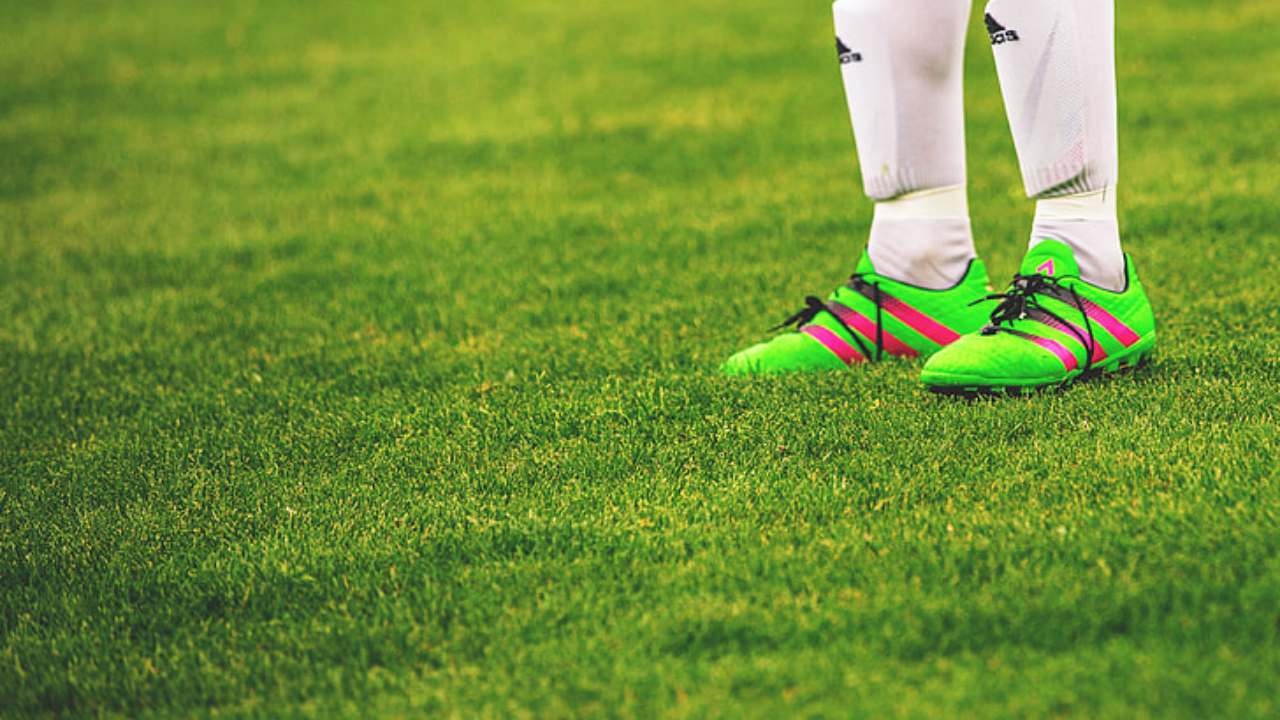Choosing the appropriate sports equipment, especially footwear, can significantly impact comfort and performance. There are cleats labeled for different sports if you’ve ever browsed through the footwear department of a sporting goods store. One of the most frequently asked questions is, “Are football and soccer cleats the same?” There is more to the response than just a simple yes or no. Although at first glance they can appear to be identical, football and soccer cleats differ significantly in a few critical ways that make them specifically appropriate for their respective sports.
1. Design and Structure Differences
Football and soccer cleats are made to give players traction on the field, but their styles differ to meet the specific needs of each game.
Football Cleats: Football is fast-paced and never stops; players must be agile with quick changes in direction and speed. As a result, soccer cleats are usually.
Low-Cut: They lack the ankle support frequently found on other cleats. This design decision offers the greatest flexibility and freedom of movement, allowing players to run, sprint, and change directions quickly.
No Toe Stud: The front of soccer cleats lacks a stud. This is an essential characteristic because, as in football, a toe stud could interfere with kicking and ball control.
Less Weight: Since soccer players must be quick, their cleats are made of lightweight materials that keep them from tiring out during a match.
Closer Fit: The cleats’ snug fit around the foot improves ball control and touch when dribbling or passing.
Football Football Cleats: Football involves a lot of physical contact, quick bursts of intense activity, and distinct duties for each player on the pitch. Thus, football cleats typically consist of:
Varied in Ankle Height: Football cleats come in three varieties: low, mid, and high. High-cut cleats offer extra ankle support, which benefits linemen or players who need more stability. Mid-cut cleats strike a balance between mobility and support, while low-cut cleats are favored by skill-position players such as wide receivers or defensive backs who prioritize speed.
Toe Stud: Football cleats usually have a stud near the big toe to offer extra traction when pushing off, which is especially useful in a sport with frequent starts and stops.
Heavier Build: Because of football’s physical nature, cleats are generally more robust and protect the feet during tackles and other collisions.
Detachable Studs: Football cleats often have detachable studs that can be changed depending on field conditions. This allows players to customize their footwear for better traction on various surfaces.

2. Performance on the Field
Football and soccer cleats differ in design, which immediately impacts how well they function on the field. Soccer cleats emphasize grip, agility, and comfort because the game requires precise footwork for ball control and dribbling. Still, a football player’s needs differ according to position. Linemen, for example, want studs that prioritize speed, while receivers and running backs choose studs that prioritize grip and stability.
Ball Control: Soccer cleats are designed to make contact with the ball, so players have more control over it thanks to their sleek, smooth design and the absence of additional studs on the toe. Conversely, football cleats have additional elements like a toe stud because they are designed for traction rather than playing with a ball.
Football cleats are known for their longer, larger studs, which assist players in digging into the ground and maintaining stability in a sport where collisions and direction changes happen often. Lower-profile soccer cleats provide increased speed and agility without compromising traction on grass or turf.
3. Versatility and Rule Considerations
Football Cleats: Although soccer cleats are frequently used in football, particularly by skill players like punters and kickers, they are only the best for some positions. They are excellent for movement but less appropriate for roles requiring more ankle support or foot protection due to their lightweight build and lack of a toe stud.
Football Cleats in Soccer: In several leagues, it is strictly forbidden to wear football cleats while playing soccer. The larger design isn’t the best for controlling the ball, and the additional stud on the toe can be hazardous if it comes into contact with another player.
4. Price and Brand Variations
Both kinds of cleats can be purchased for a reasonable price or a high one, depending on the brand and technology included in the shoe. Football and soccer cleats are made by well-known sports brands like Nike, Adidas, and Under Armour, frequently using cutting-edge technology to enhance comfort, performance, and durability. When selecting cleats, it’s crucial to take your playing position, the surface you’ll be playing on, and your comfort preferences into account.
5. Conclusion: Know the Difference Before You Buy
So, are football and soccer cleats interchangeable? Not precisely. Even though they may not look alike to the naked eye, they are designed to fulfill the unique requirements of their different sports. Football studs are heavier, come in different ankle heights, and have extra features like the toe stud for stability and traction. In contrast, soccer studs are lightweight, low-cut, and made for ball control and agility.
Recognizing these variations will help you prevent injuries and enhance your performance on the pitch. The next time you’re out cleat shopping, choose the appropriate cleats for your sport and playing style!


